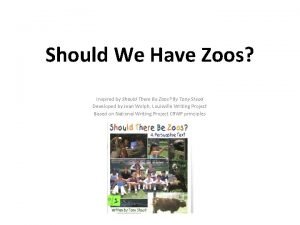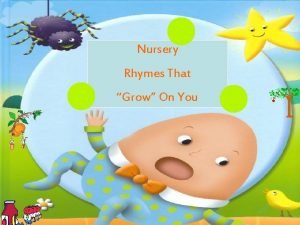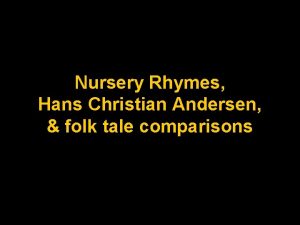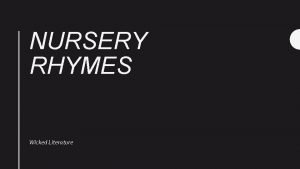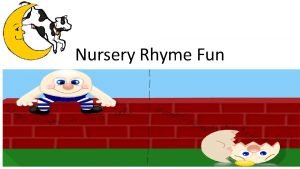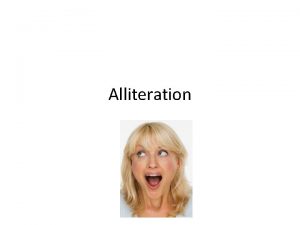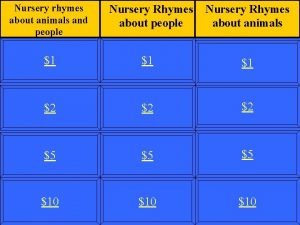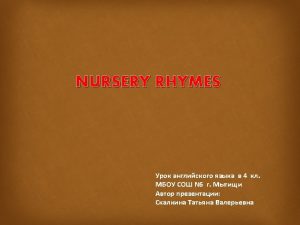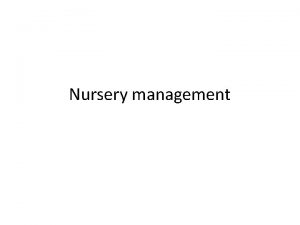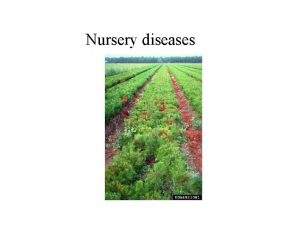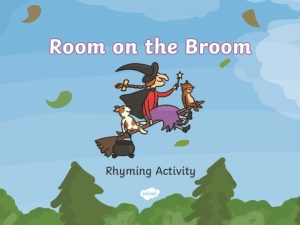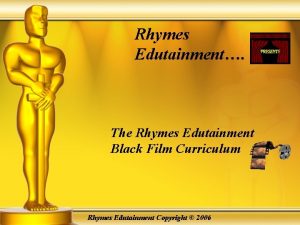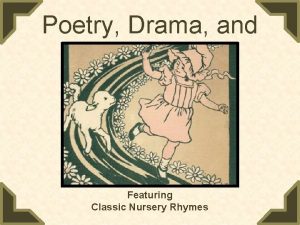Nursery Rhymes Rhymers are Readers Tony Stead national









- Slides: 9

Nursery Rhymes

Rhymers are Readers Tony Stead, national literacy consultant for Mondo Publishing. • In 1945, average elementary student had a vocabulary of 10, 000 words. • Today (2010), children have a vocabulary of 2500 words. • “Listening comprehension precedes reading comprehension. For a child to understand what they are reading, they have to be able to hear the language first. ” • Rhyme is important in developing phonemic awareness in children.

Rhymers are Readers Why Rhymes Are Important • Language Development • Hear the sounds vowels and consonants make • Practice pitch, volume ad voice inflection • Vocabulary development • Cognitive Development • Patterns of rhymes make them easy to recite and memorize • Story patterns: Beginning, middle & end • Sequencing • Numbers, counting, and other math concepts

Rhymers are Readers Why Rhymes Are Important • Physical Development • Develop mouth and tongue muscles • Reciting with movement actions, improve coordination • Social/Emotional Development • Sense of humor • Understand emotions • Allows children to express themselves

Ways to Include Nursery Rhymes in the Curriculum • Unit: Develop a unit incorporating a group of nursery rhymes. • Nursery Rhyme of the Week • Add to current curriculum topics • Include in morning message • Create a center

Planning a Nursery Rhyme Curriculum September: 1, 2, 3, 4, 5 Once I Caught a Fish Alive (Letter Ff) Rock A Bye Baby (Baby Moses) October: Rub a Dub (Columbus Day) Little Miss Muffet (Spiders) November: Sing a Song of Sixpence (Birds) Old Lady Who Lived in a Shoe (Old Lady and Coins)

January: Wee Willie Winkie (Pajama Day) Three Little Kittens (Winter/Mittens) Queen of Hearts Hey, Diddle Mary Had a Little Lamb Little Bo Peep Old King Cole Muffin Man February: March: April/May:

Teacher Resource Books • “Cut and Create Mother Goose” by Kim Rankin • “Teaching Math and Science with Nursery Rhymes” by Amy De. Casro & Jennifer Kern • “Literacy Centers & Activities for Nursery Rhymes Vol. 1 Pre. K-1” & Vol. 2 by Teacher Created Materials • “Follow the Directions Art: Nursery Rhymes” by Deborah Schecter • “Mother Goose Math” by Deborah Schecter • “Teaching Tunes: Favorite Songs” by Dr. Jean Feldman • “Once Upon a Nursery Rhyme Prek-K” Mailbox Books • “Everything Nursery Rhymes Pre-K” Mailbox Books • “Beginning Counting with Mother Goose” by Jo. Ellen Moore • “Literature Pockets: Nursery Rhymes” by Jo. Ellen Moore

References "Rhymers Are Readers: The Importance of Nursery Rhymes. " http: //www. kbyutv. org. KBYU Eleven, n. d. Web. 18 Feb. 2012. <www. kbyutv. org/kidsandfamily/readytolearn/file. axd? file= 2011%2 F 3%2 F 2+Rhymers+are+Readers. Why+Important. pdf>. "Why Nursery Rhymes? . " The Kids at Our House - Danny & Kim Adlerman. N. p. , n. d. Web. 19 Feb. 2012. <http: //www. dannyandkim. com/Why. Nursery. Rhymes. html>. Clip Art: DJ Inkers
